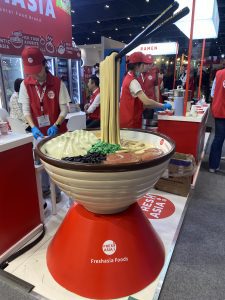Understanding the 12-Month PR Trajectory
Very often we receive a call from a potential new client who has phoned up to tell us their current PR team is hopeless: they’ve been working for 3 months and the client has hardly seen a thing, so they want to talk about switching to a different agency. However, we hardly ever take these calls seriously, certainly not in the first instance. Because we’re kind, we usually spend time explaining why their PR team is actually probably on track and what markers they need to look for to check this. If they come back to us again, then we take them seriously. But PR is a long game.
PR is a long game
When you invest in PR, it’s completely normal to want instant results. But PR doesn’t work like flicking a switch, it’s more like planting seeds and nurturing them over time. One of the biggest misconceptions is expecting headlines to appear straight away. In reality, the coverage curve for most campaigns looks more like the graph you see below, it’s slow to start and steadily builds over time until you reach a great level of momentum.
This is due to lead times, editorial calendars, and media relationships which all need to be built over time. If you want coverage to appear in June, you want to start your PR in February, depending on what your story is and who you’re targeting with it.
Genuine earned editorial PR isn’t about pushing out content for the sake of it, it’s about building trust and securing meaningful, high-value coverage.
The graph tells the story: strategy comes first, patience pays off, and real results build over time.

So, what’s actually happening behind the scenes?
Months 1–2: Planning, Positioning and Preparation
The first four to six weeks of a campaign are all about strategy and messaging. This is when we get under the skin of the brand, define the story, write the press materials, and start pitching to journalists with carefully crafted ideas.
At this stage, coverage hasn’t landed yet and that’s completely normal. We’re laying the groundwork. Rushed PR often results in rushed (and disappointing) coverage.
It’s a bit like building a house. No one celebrates the foundations, but without them, the whole house won’t stand.
Months 3–6: First Wins and Gaining Traction
By month three, we’ll usually see the first pieces of coverage start to land, especially from digital outlets and short-lead media (that’s anything with a quick turnaround). But most of the activity here is about building momentum for the really good pieces of coverage. We’re following up with journalists, securing interviews, and continuing to pitch relevant stories.
This is where the curve starts to lift. We’re getting traction, and the brand’s visibility begins to grow.
Months 6–9: Momentum Builds
By six months, everything starts to really click into place. Journalists briefed months ago have now secured and are now running relevant features. Long-lead publications (like glossy magazines that work 3–6 months in advance) start publishing. The brand becomes more recognisable to media and things really pick up pace.
That sharp curve on the graph? That’s what momentum looks like.
Months 9–12: Consistent Momentum
Around month nine, coverage is really coming now and we’re able to get the campaign into a nice steady rhythm. The brand has presence, credibility and a growing media profile. We can now maintain this constantly with fresh stories, seasonal hooks, and product news.
PR isn’t about quick wins or instant gratification, it’s about building lasting momentum that leads to meaningful, long-term results. When you give your campaign the time and space it needs to flourish, you set your brand up for sustained visibility, stronger media relationships, and real impact. Trust the process, stay the course, and the results will follow.
Contact us: hello @ sharprelations dot com




